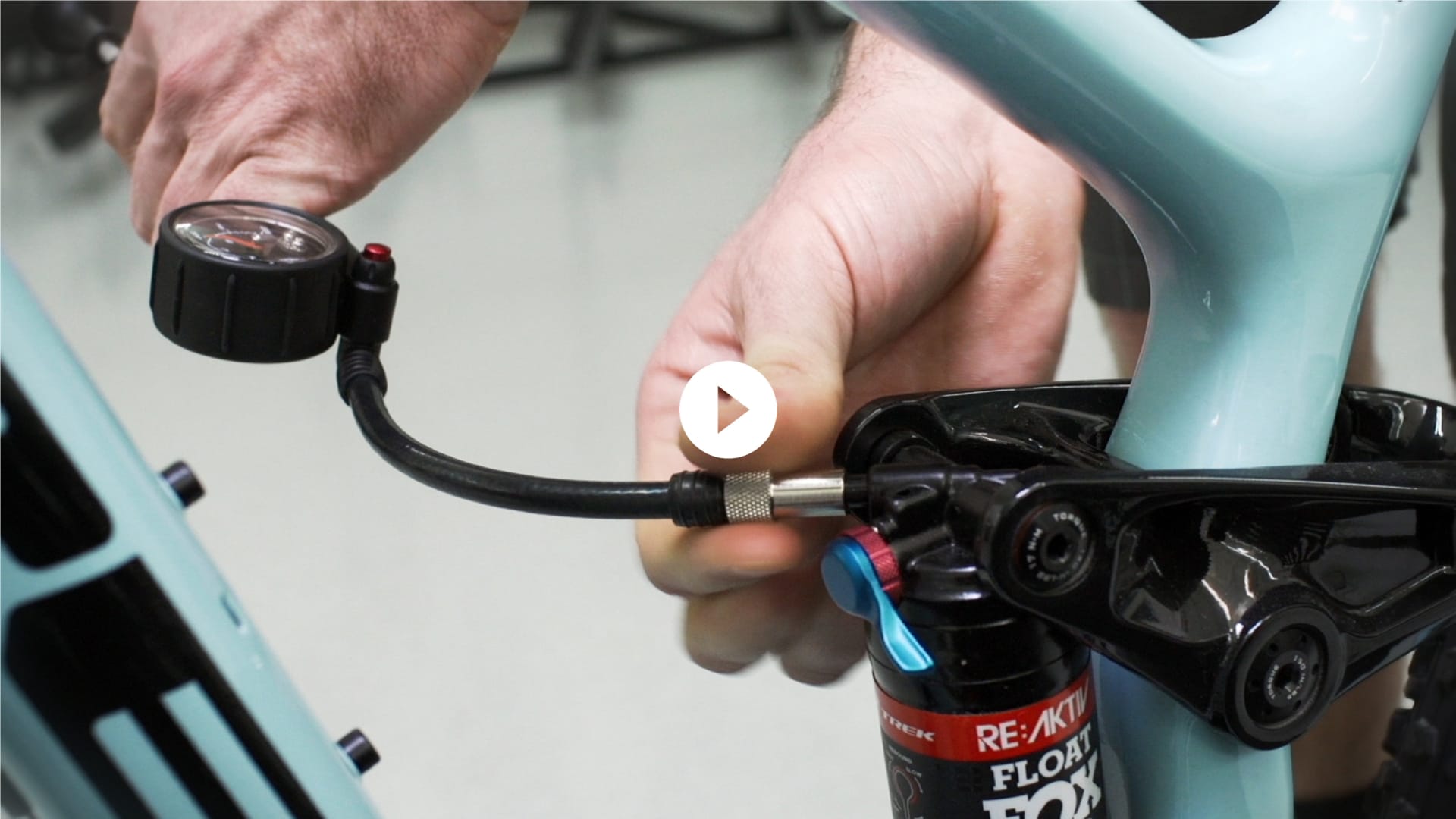Proper suspension set-up is a crucial component of getting the best performance out of your mountain bike. Front suspension forks and rear shocks both require simple adjustments to work best for a particular rider, so this information is relevant to riders of both hardtail and full suspension mountain bikes. Luckily, getting your suspension dialed in takes only minutes if you follow the simple steps below.
Suspension calculator
This suspension calculator will help you optimize your suspension settings for your riding weight. Simply follow the steps in the video or listed below.Note that recommended settings are suggested starting points, not rigid values that will work for every rider.
Get startedStep-by-step instructions
1. Sag set-up should be performed in full riding gear including shoes, helmet, and pack to ensure accuracy. 2. Set the compression damping to “open” by turning the blue knob on your fork all the way counter-clockwise, and the blue lever on your shock counter-clockwise. 3. Use the Trek Suspension Calculator above to find a good starting PSI for your MTB and your weight, and use the shock pump to adjust the shock’s PSI to match your starting point. 4. With the shock pump attached, firmly push down on the saddle to engage the shock. Check the gauge, and adjust the PSI again if necessary. 5. Mount the bike with a friend holding you up, or lean against a wall. Move the rubber o-rings on the fork and shock so they’re against the seals. 6. Carefully dismount without further compressing the suspension. Leaning the bike to one side helps with this. 7. Measure the distance in millimeters between the o-rings and the seals. This is your sag measurement. 8. Use the Trek Suspension Calculator to find your ideal sag measurement in millimeters. If your measured sag is not within 2-4mm of the recommended sag, use your shock pump to adjust the PSI. Add air if the o-ring traveled too far. Use the bleed valve to remove air if it did not move far enough. 9. Use the Trek Suspension Calculator to find the recommended rebound setting. 10. Turn the red dials on your fork or shock fully clockwise to the closed position. From there, turn the red knob counter-clockwise the recommended number of clicks. 11. Now you’re set up, but remember that this is only a starting point. Go for a short test ride with plenty of bumps. If you feel a bucking sensation from your shock, or a pogo stick sensation from your fork, slow the rebound by turning the red knob 1-3 clicks clockwise. If you feel like the shock or fork is packing down, or not fully recovering from successive hits, speed up the rebound by turning the red knob 1-3 clicks counter-clockwise. 12. After a few rides, re-check your set-up by measuring the distance between the o-rings and the shock body or fork lowers. After a typical ride, the o-ring distance should match the specified stroke for your shock, or the travel for your fork. If you are not achieving full travel, you may want to try lowering your PSI. If the o-ring is traveling too far, or sliding off the shock shaft, you may want to increase your PSI. 13. Remember that individual preference and ride style are important factors in finding the suspension setting that works for you. Experiment with different levels of sag and rebound until you find the combination that best fits the way you ride your mountain bike.
